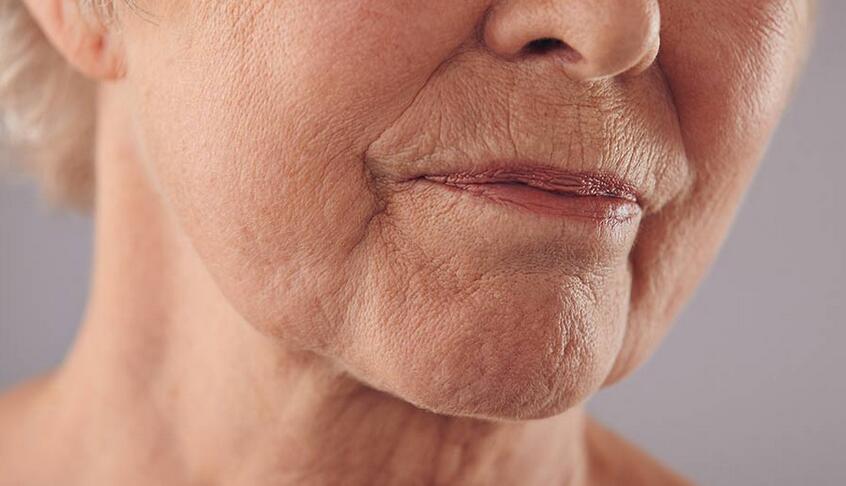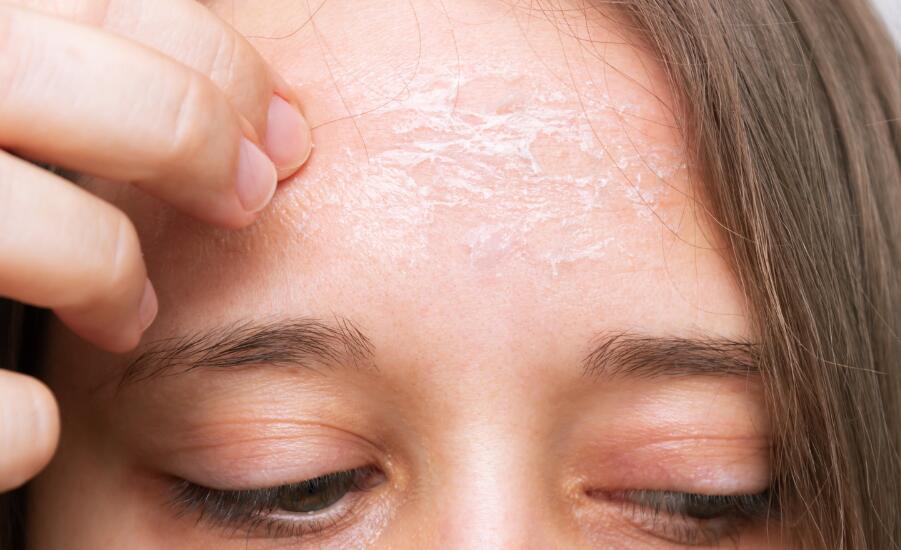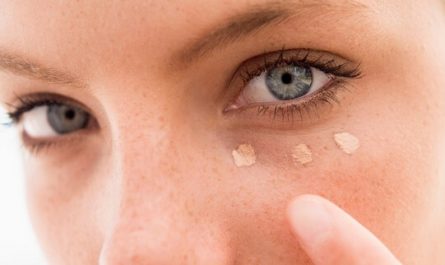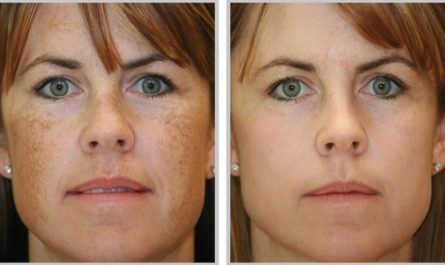As we age, one of the most noticeable changes in our appearance is the development of sagging, loose skin on the face. Those youthful contours gradually give way to jowls, bags under the eyes, and a softer jawline. While this process is completely natural and happens to everyone eventually, many people feel self-conscious about facial sagging. Fortunately, there are many ways to help prevent and treat sagging facial skin. This article will discuss 12 common causes of sagging facial skin and explore a range of treatments.

12 Common Causes of Your Face Skin Sagging
1. Loss of Collagen and Elastin
Collagen and elastin are two critical proteins that give skin its firmness, structure, and elasticity. Collagen acts as a scaffold to provide strength and support, while elastin allows skin to stretch and then snap back into place.
As we get older, the body’s production of both collagen and elastin declines significantly. Collagen levels decrease by about 1% per year after age 20, with a dramatic drop in women after menopause. With less collagen and elastin, the structural integrity of the skin weakens, leading to sagging and wrinkles.
To boost collagen and elastin production, consider these strategies:
- Use skincare products with retinoids, which are vitamin A derivatives that stimulate collagen synthesis and improve skin texture.
- Apply vitamin C serums, which provide antioxidant protection and enhance collagen production.
- Take collagen supplements or eat foods rich in collagen-building nutrients like vitamin C, proline, and glycine.
- Engage in regular exercise, which increases blood flow to the skin and promotes collagen synthesis.
2. Loss of Facial Fat
The youthful appearance of full cheeks and a defined jawline is due in part to the presence of facial fat. It provides volume and contour. With age, we lose this subcutaneous fat, especially in the midface area. The combination of fat loss and reduced skin elasticity causes the skin to droop downward.
To restore lost facial volume and create a lifting effect, consider these options:
- Dermal fillers like Juvederm, Restylane, and Sculptra can be injected into the cheeks, temples, and other areas to replace lost fat and provide structure.
- Fat grafting involves harvesting fat from another area of the body (like the thighs or abdomen) and injecting it into the face to restore volume. Results can be long-lasting.
3. Sun Damage
Excessive sun exposure is one of the biggest contributors to premature skin aging. UV rays penetrate deep into the dermis and damage the collagen and elastin fibers. Over time, this photodamage causes the support structure of the skin to break down much faster. Sun damage also impairs the skin’s ability to repair itself.
To protect your skin from the aging effects of the sun, follow these tips:
- Wear a broad-spectrum sunscreen with an SPF of at least 30 every day, even when it’s cloudy. Reapply every two hours if you’re spending time outdoors.
- Seek shade during peak sun hours, typically from 10 am to 4 pm.
- Wear protective clothing like a wide-brimmed hat, long-sleeved shirt, and sunglasses when spending extended time outdoors.
- Use skincare products with antioxidants like vitamins C and E, which help neutralize free radical damage from UV exposure.
- Consider in-office treatments like laser resurfacing or chemical peels to address existing sun damage and stimulate collagen production.
4. Smoking
Smoking is one of the worst things you can do for your skin. The toxins in cigarette smoke decrease circulation, impair collagen production, and directly damage the skin’s elastin fibers. This accelerates the aging process and leads to more pronounced sagging, especially around the mouth and eyes.
Quitting smoking is one of the best things you can do for your skin health. Within just a few weeks of quitting, circulation improves, and collagen production increases. The skin’s tone and texture gradually improve, and the appearance of fine lines and sagging may become less noticeable over time.

5. High Sugar Diet
Consuming a diet high in sugar and refined carbohydrates can accelerate skin aging through a process called glycation. When sugar molecules attach to collagen and elastin fibers, it makes them stiff, weak, and prone to breakage. Over time, this glycation process contributes significantly to skin sagging.
To minimize the effects of glycation, follow these dietary guidelines:
- Limit your intake of added sugars from foods like candy, baked goods, and sweetened beverages.
- Choose complex carbohydrates like whole grains, legumes, and vegetables instead of refined carbs like white bread and pasta.
- Eat plenty of fruits and vegetables, which are rich in antioxidants that help protect against glycation.
- Include healthy fats like omega-3 fatty acids from fish, nuts, and seeds, which help maintain skin moisture and elasticity.
- Stay well-hydrated by drinking plenty of water throughout the day. Aim for at least 8 glasses per day, more if you’re active or live in a dry climate.
6. Dehydration
Skin that is chronically dehydrated is more prone to sagging and wrinkling. When the skin lacks moisture, it loses its plumpness and resiliency. Fine lines are more likely to turn into deeper wrinkles, and the skin’s support network weakens.
To keep your skin hydrated and supple, try these tips:
- Drink plenty of water throughout the day. Aim for at least 8 glasses per day, more if you’re active or live in a dry climate.
- Use a humidifier in your home or office to add moisture to the air, especially in dry winter months.
- Apply a moisturizer twice daily to lock in hydration and protect the skin’s barrier function. Look for ingredients like hyaluronic acid, glycerin, and ceramides.
- Avoid hot showers and baths, which can strip the skin of its natural oils. Use lukewarm water instead and limit shower time to 10 minutes or less.
- Eat water-rich foods like cucumbers, watermelon, and zucchini, which help hydrate the body from the inside out.
7. Lack of Sleep
During sleep, the body repairs damage and produces new collagen. Skimping on sleep inhibits these essential skin regeneration processes. Poor sleep is also linked to increased inflammation and cortisol production, both of which break down collagen and elastin.
To optimize your skin’s overnight repair processes, aim for 7-9 hours of quality sleep per night. Create a sleep-friendly environment by keeping your bedroom cool, dark, and quiet. You can also establish a relaxing bedtime routine, such as taking a warm bath or reading a book, to help you fall asleep more easily.
8. Hormonal Changes
Hormones play a key role in skin health, and changes in hormone levels can have a big impact on the skin’s appearance. The decline in estrogen that occurs during menopause is a major contributor to sagging skin in women.
Estrogen stimulates collagen production and helps keep skin thick and elastic. When estrogen levels drop, the skin produces less collagen and becomes thinner and less resilient.
If you suspect that hormonal changes may be contributing to your skin concerns, talk to your doctor about getting your hormone levels tested. Treating underlying hormonal imbalances can help improve the health and appearance of your skin.

9. Rapid Weight Loss
Losing a large amount of weight in a short period, such as after bariatric surgery or an extreme diet, can leave behind loose, saggy skin. When you gain weight, the skin gradually stretches to accommodate the increased volume. But when you lose weight quickly, the skin may not be able to shrink back fast enough.
Younger skin with good elasticity can bounce back more readily, but older skin that has lost collagen and elastin may not be able to retract completely, resulting in sagging. Losing weight at a slow, steady pace allows the skin more time to adapt and may minimize sagging.
10. Gravity
The constant downward pull of gravity takes a toll on the skin over time, especially on the face. As skin loses its elasticity and underlying support from fat and bone, it is less able to resist the effects of gravity. This leads to a downward migration of the skin, resulting in sagging cheeks, jowls, and neck.
While you can’t completely escape the effects of gravity, there are steps you can take to counteract its impact on your skin:
- Maintain good posture by keeping your head up and your shoulders back. Slouching and looking down at electronic devices can contribute to neck wrinkles and sagging.
- Use firm skincare products that contain ingredients like retinoids, vitamin C, and peptides, which help stimulate collagen production and improve skin elasticity.
- Consider non-surgical skin tightening treatments like radiofrequency, ultrasound, or laser devices, which can help lift and firm sagging skin without surgery.
11. Facial Muscle Atrophy
Just like the rest of the body, the muscles in the face can atrophy and weaken with age. As facial muscles lose tone and definition, they provide less support for the overlying skin, contributing to sagging.
To help maintain facial muscle tone and prevent atrophy, consider these strategies:
- Perform facial exercises regularly to strengthen the muscles of the face. Some popular exercises include the “cheek lifter,” “eyebrow lifter,” and “neck lifter.”
- Use facial massage techniques to stimulate circulation and promote lymphatic drainage. Gently massaging the face in upward motions can help lift and firm the skin over time.
- Try microcurrent devices, which use low-level electrical currents to stimulate facial muscles and improve tone. These devices can be used at home or in a professional setting.
- Maintain a healthy diet and exercise routine to support overall muscle health. Eating plenty of protein and engaging in regular resistance training can help prevent muscle loss.
12. Genetics
The natural aging process of the skin is largely determined by genetics. Some people are predisposed to experience sagging at an earlier age due to their inherited collagen and elastin levels, skin thickness, facial structure, and other factors.
While you can’t change your genes, you can take steps to protect your skin from environmental damage and support its natural regenerative processes. This includes:
- Wearing sunscreen daily to prevent UV damage, which can break down collagen and elastin and accelerate genetic aging.
- Eating a healthy diet rich in antioxidants, vitamins, and minerals that support skin health. Some key nutrients for the skin include vitamin C, vitamin E, beta-carotene, and omega-3 fatty acids.
- Getting enough sleep allows your skin to repair and regenerate overnight. Aim for 7-9 hours of quality sleep per night.
- Managing stress through relaxation techniques like meditation, deep breathing, or yoga. Chronic stress can accelerate the aging process and break down collagen and elastin.

Medical Treatment Options for Sagging Facial Skin
In addition to the targeted strategies mentioned above, there are several general treatment options for improving the appearance of sagging facial skin:
1. Dermal fillers
Dermal fillers are injectable substances that can restore volume and plumpness to areas of the face affected by sagging. Hyaluronic acid fillers, such as Juvederm or Restylane, are commonly used to fill in wrinkles.
Collagen fillers, although less commonly used today, can also provide temporary results. The fillers are injected beneath the skin to lift and smooth out sagging areas.
2. Botox
Botox, or botulinum toxin, is a neurotoxin that temporarily paralyzes the muscles responsible for causing wrinkles and sagging. It is commonly used to treat forehead lines, crow’s feet, and frown lines between the eyebrows. Botox can help reduce the appearance of sagging and create a more youthful and lifted appearance.
3. Thread lift
A thread lift is a minimally invasive procedure that involves inserting dissolvable threads under the skin to lift and tighten sagging areas.
The threads have small barbs or cones that anchor them to the tissue, providing an immediate lifting effect. Over time, the threads stimulate collagen production, which further enhances the lifting and tightening effect.
4. Radiofrequency (RF) therapy
RF therapy uses radiofrequency energy to heat the deeper layers of the skin, stimulating collagen production and causing skin tightening. The heat energy encourages collagen remodeling and improved skin elasticity.
RF therapy is often used to treat mild to moderate facial sagging, and multiple sessions may be required for optimal results.
5. Laser skin tightening
Laser treatments can also be used to tighten sagging facial skin. It is delivered to the skin, heating the deeper layers and stimulating collagen production.
This promotes skin tightening and improves the appearance of sagging. Laser skin tightening treatments are typically non-invasive and require little to no downtime.
6. Surgical facelift
In cases of severe sagging that cannot be effectively treated with non-invasive options, a surgical facelift may be recommended. This procedure involves making incisions in the skin, removing excess tissue, and tightening the underlying muscles and connective tissues.
The remaining skin is then re-draped and sutured for a more lifted and youthful appearance. A facelift can address significant sagging and provide long-lasting results. However, it is a more invasive procedure that requires a longer recovery period.






